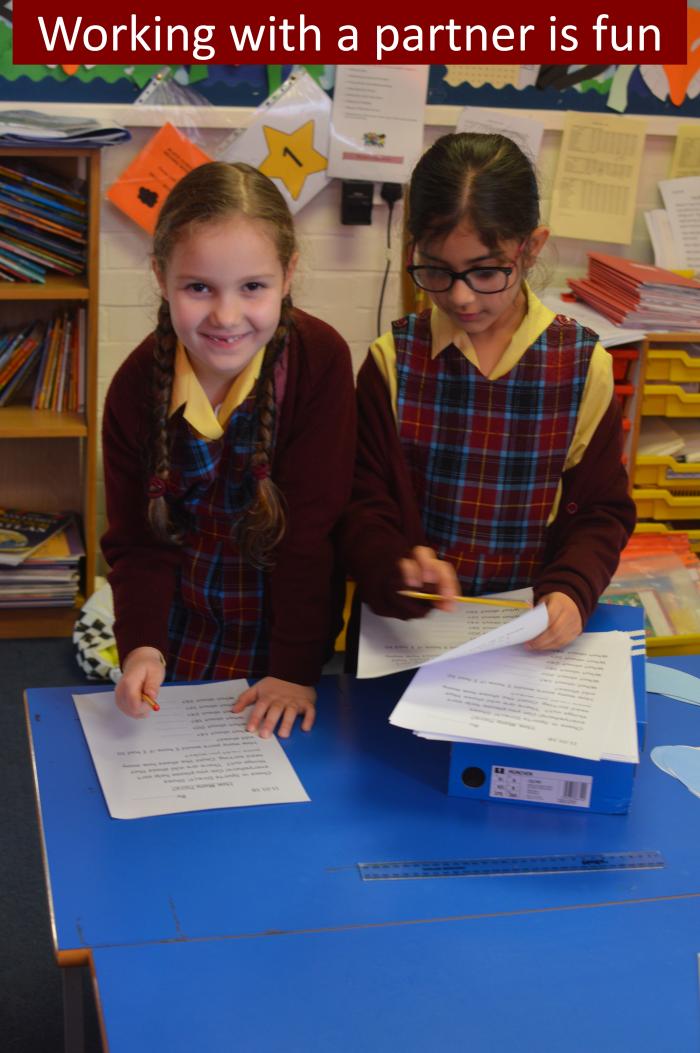
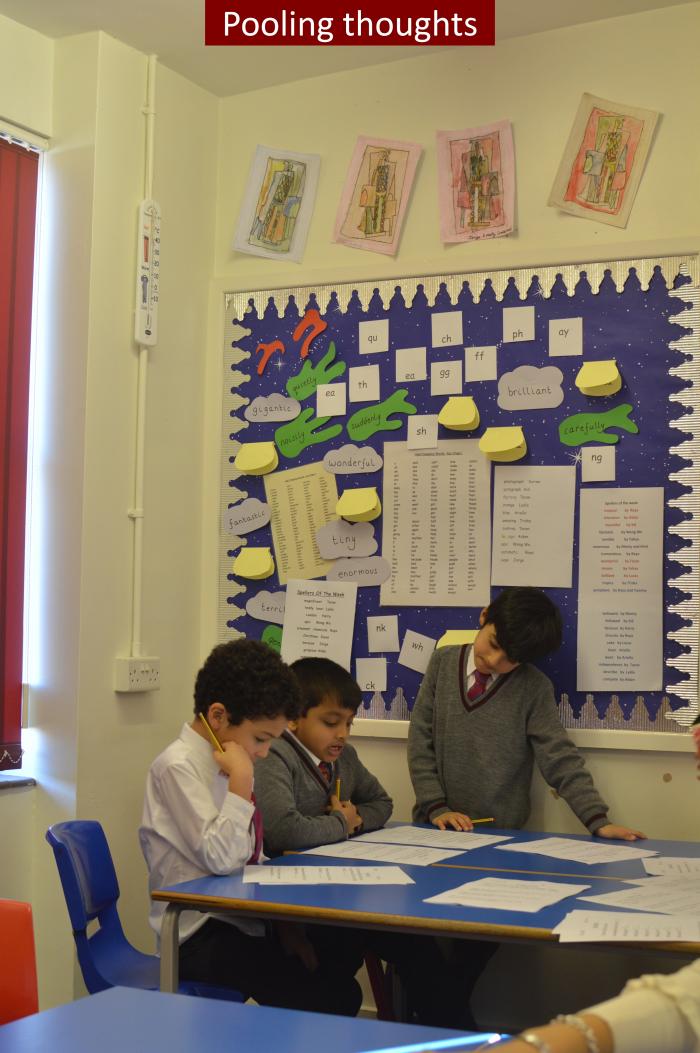
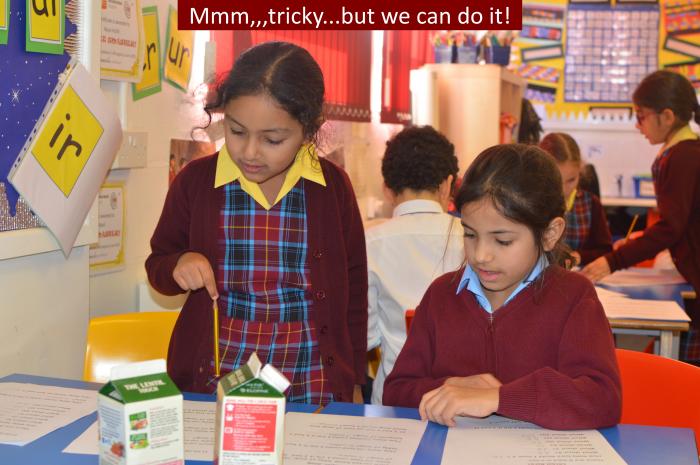
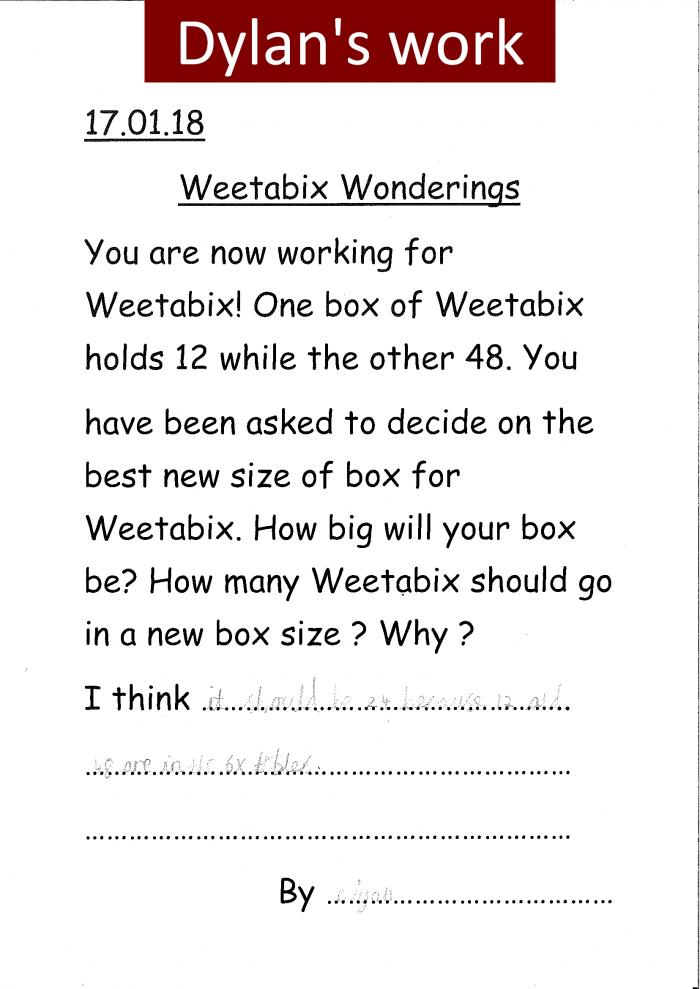
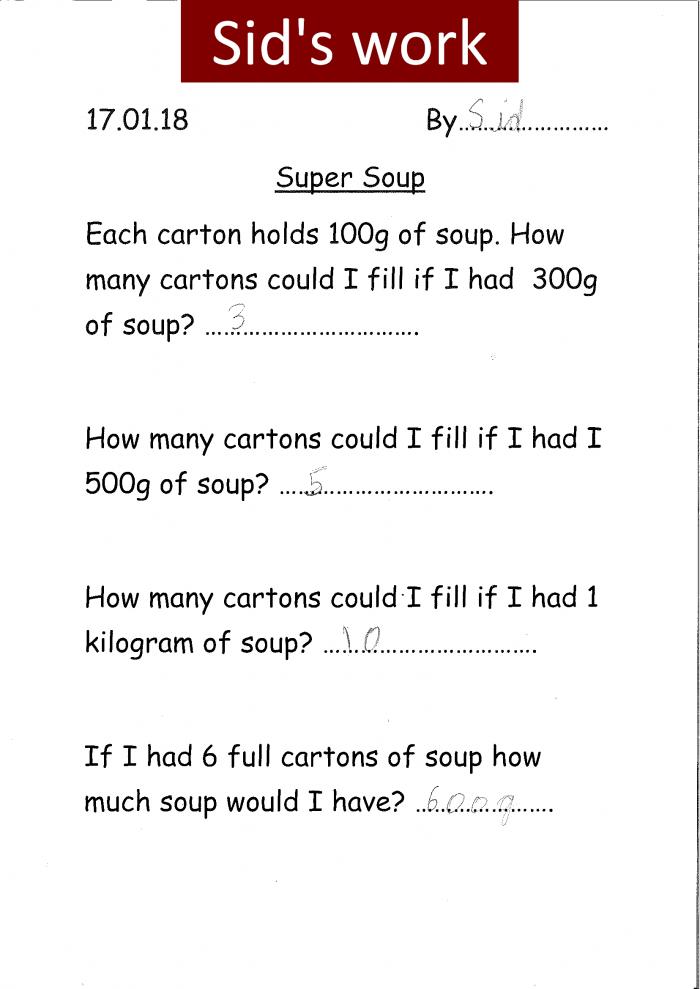
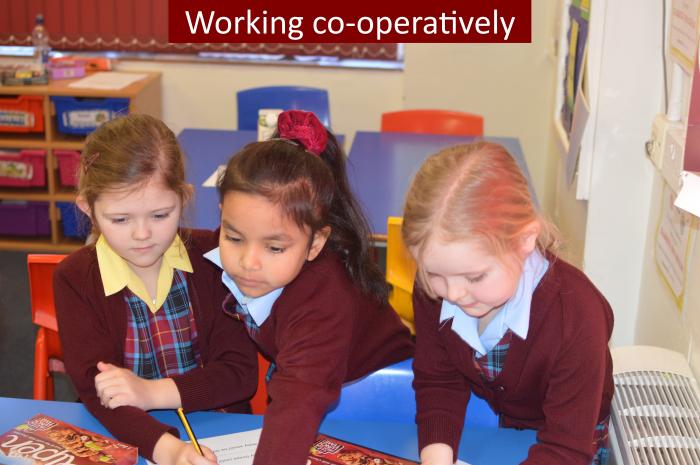
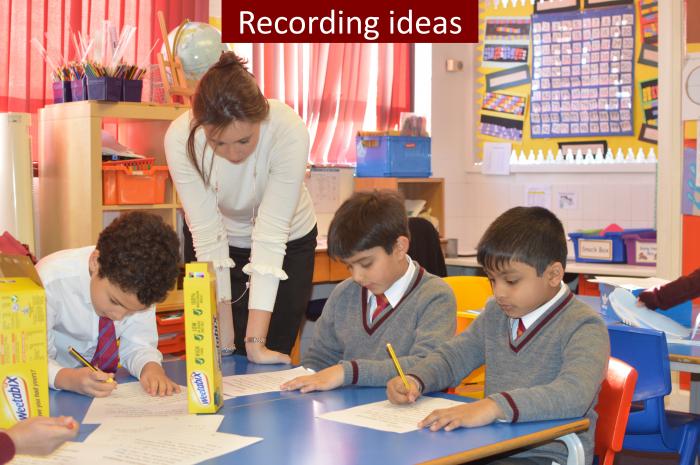
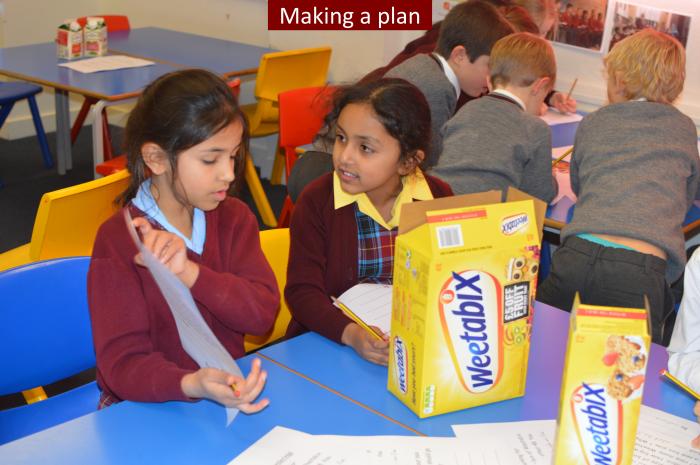
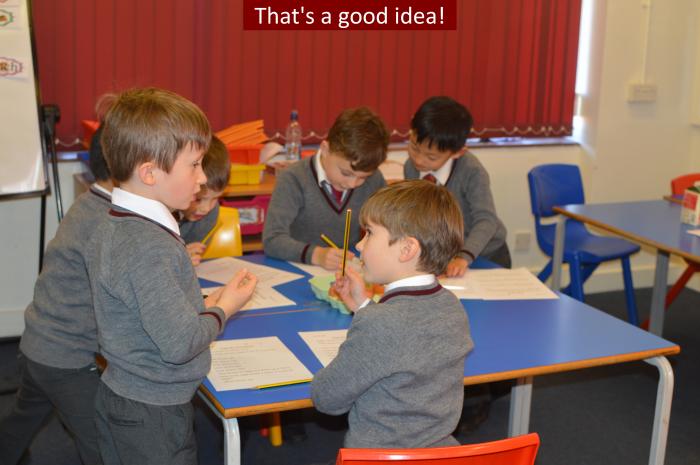
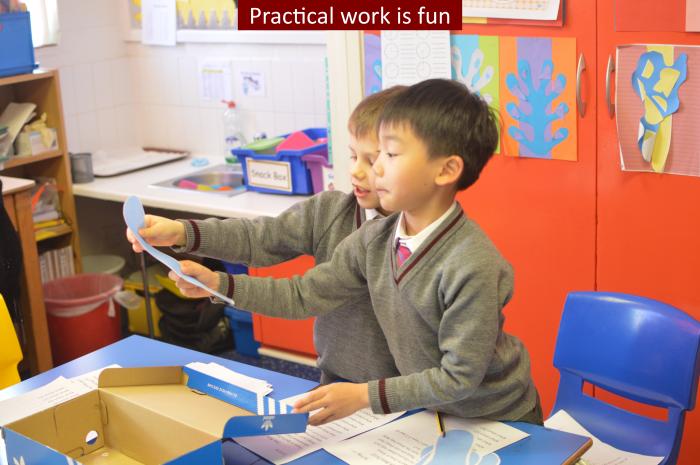
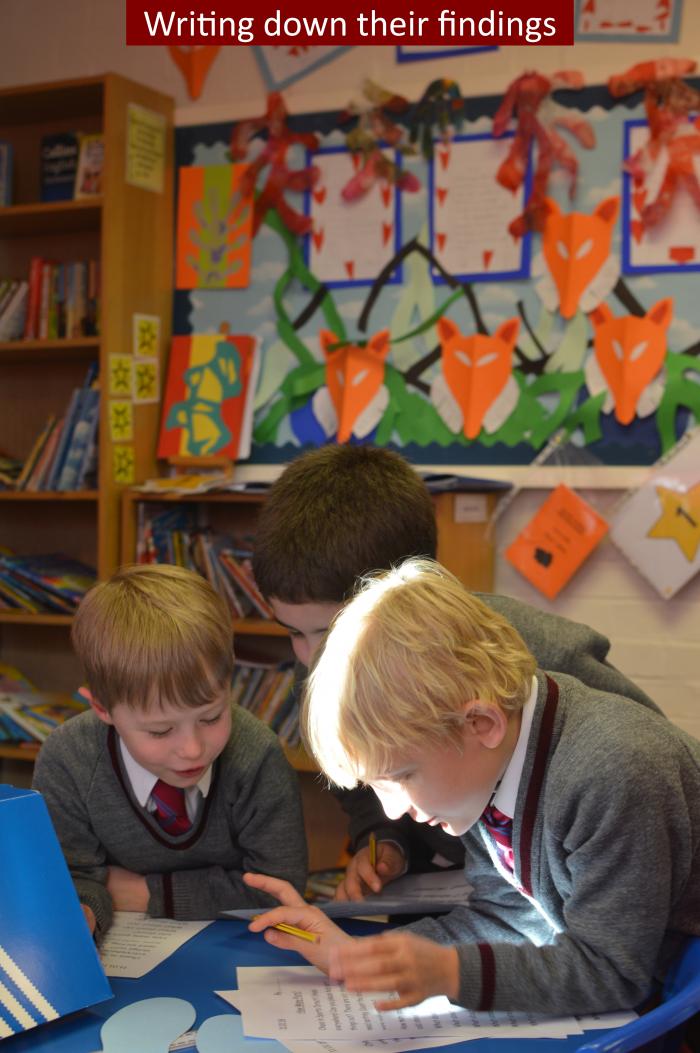
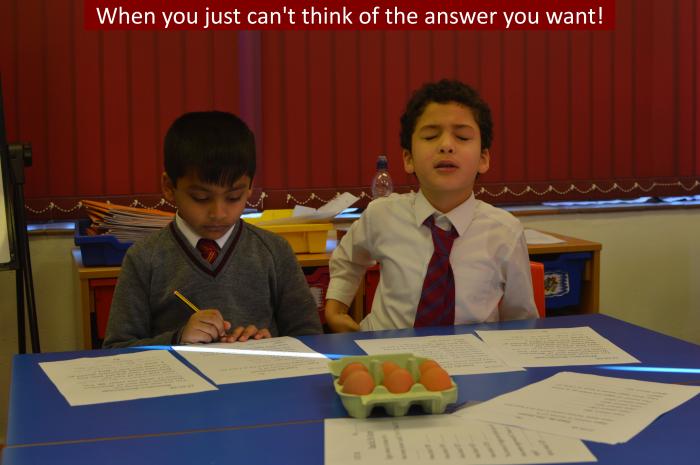
Mr Solly’s Shopping Trolley
This week Mr Solly has done a supermarket sweep and has brought the contents of his shopping trolley into school to help the children with their problem solving in Mathematics.
The children in 2TS have invested a lot of time and effort into learning their times tables. In Mr Solly’s lesson they had the chance to see what all their hard work has been for, and to use their knowledge in a practical ‘real life’ situation. The lesson was all about making choices - who to work with, which of the different tasks to attempt first, and which strategy would be the best to employ to solve the problem – and the children certainly appreciated this level of freedom.
There were five separate tasks available for the children. Surina and Trisha, for instance, began with the ‘Super Soup’ activity, in which they were presented with soup cartons and asked to complete a series of multiplication and division problem questions based around grams and kilograms. Often it is amazing how recall of basic number facts can evaporate when put into the context of measures and, for this reason, throughout the school we like to confront children with questions of this kind on a regular basis. At the end of the session, Surina was happy to tell Mr Solly that she now felt much more confident about solving problems involving measures.
Meanwhile, Lydia, Hiral and Ariella decided to have a go at the ‘Cereal Bars’ challenge. Here they had a box containing five cereal bars and had to use their knowledge of the 5x table to work out the quantity of cereal bars in multiple boxes. By counting in fives, the children were encouraged to suggest totals beyond the bounds of the traditional times table they are used to recalling, leading to the discovery that 20 boxes actually contain 100 cereal bars.
Bouncing ideas off one another proved invaluable. As well as the vital input from the teacher, children can learn a huge amount from each other. Diyan, Taran and Yahya took up the challenge of ‘Weetabix Wonderings’, in which they were invited to imagine that they were employed in the packaging department of Weetabix Limited and charged with the task of deciding upon the best new size of box for Weetabix. Of the two boxes they had to look at, one held 12 and the other held 48 Weetabixes. Diyan recognised that both these numbers are in the 6x table and therefore suggested that 24 would be a suitable alternative size.
Weng Wo and Harry looked inside Mr Solly’s shoe box to tackle the ‘How Many Pairs?’ activity. In this they had to sort out a heap of odd insoles into pairs and use their knowledge of halving to say how may pairs they would have, based on different total numbers of individual shoes.
For the final task, Mr Solly brought in an egg box with real eggs in it, although this was not quite such a foolhardy action as you might at first think as the eggs were very hard boiled! Here the children had to say how many boxes would be required for different numbers of eggs. By encouraging them to make a link through doubling, the children were able to deduce that, if ten boxes are required for 60 eggs, 120 eggs will need a total of 20 boxes.
For Mr Solly and Miss Pearce, their role was one of observing the children carefully and listening to their conversations, choosing when and where to intervene to assist with a problem or to move the learning forward. Even when you think you know your class inside out, a vast amount of knowledge can be gleaned in a situation like this, which will be invaluable when planning future lessons.
When they had completed the tasks, the children had the opportunity to write their own problem for someone else to solve. They came up with some fabulous ideas. This was Aidan’s suggestion: ‘If there are ten cartons in a milk box, how many cartons would there be in ten boxes?’ Can you answer that one? Taran, meanwhile, came up with this one: ‘If I have nine boxes of milk and they each hold 500g, how many grams will I have in total?’
The next step for 2TS, as far as Mr Solly is concerned, following on from some of the larger numbers they encountered in their problem solving, is to develop strategies for dividing larger numbers outside their basic times table knowledge. For Weng Wo, however, the lesson was so much fun that he just wants to do ‘MORE MATHS!’